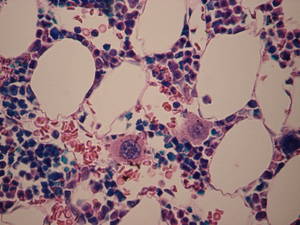A way to grow blood platelets, a critical ingredient in the cogulation system, has been announced by scientists in Japan.
When you cut yourself, tiny little blood cell fragments called platelets  rush to the rescue, helping the blood to clot and the wound to heal. They're a vital treatment for people hurt in accidents, or those with certain blood diseases, but they can only be gathered from blood donations. And, as any doctor will tell you, there are never enough donations, especially because platelets have to be kept at room temperature and have a very short shelf-life.
rush to the rescue, helping the blood to clot and the wound to heal. They're a vital treatment for people hurt in accidents, or those with certain blood diseases, but they can only be gathered from blood donations. And, as any doctor will tell you, there are never enough donations, especially because platelets have to be kept at room temperature and have a very short shelf-life.
But this could be about to change, thanks to an important new paper from Dr Koji Eto and his team in Japan, published in the journal Cell Stem Cell. In it, the researchers describe a new way to create platelets from stem cells grown in the lab, potentially reducing the need for donated platelets in the future.
The researchers used a recently developed technique that we've heard a lot about lately - so-called induced pluripotent stem cells, or IPS cells. This is a way of turning adult cells into stem cells by adding a handful of protein factors - a discovery that won Japanese scientist Shinya Yamanaka a Nobel Prize in 2012.
Eto's team treated IPS cells with a cocktail of genes that converted them into a type of cell called a megakaryocyte - a large precursor cell that produces platelets. And the platelets the converted cells made had similar clotting capabilities to platelets from donated blood.
Scientists have previously tried to create platelets from reprogrammed stem cells but the yield has been very low, whereas this new technique produces large quantities. Furthermore, the megakaryocyte precursors can be safely frozen, and could potentially be grown on a large scale, which might mean platelets on tap on the future.
- Previous Acne bacteria spotted in grapevines
- Next Stress depresses markets










Comments
Add a comment